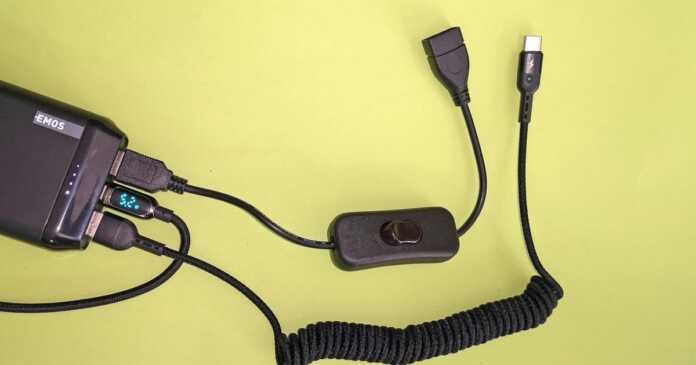Everyone has a USB cable, but it is still worth taking a look at the range of unusual cables with additional functions such as automatic winding, magnetic connections or an integrated display. Voonze shows which USB cables are practical or just a nice joke.
Whereas the classic USB connection used to be only for computer accessories, the versatile cable has now also become established for many other gadgets. Smartphones and external SSD storage (guide) use the high data rate that USB 3.0 offers. Many other gadgets, such as flashlights (guide) or wireless headphones (theme world) only use the cable to transmit electricity.
As a rule, the required cables have long been available in every household. However, it never hurts to use more than just the standard cables here. In particular, the charging cables included with many gadgets are actually only suitable for charging with little power. For cost reasons, some manufacturers do not use the connection for data transfer at all. Others rely on the cheaper USB 2.0 cables, which are inferior to the USB 3.0 standard in terms of both data rate and current flow. More information on the technical differences can be found in our purchase advice for USB-C cables: Not everyone can do everything .
In this guide, we look at unusual USB cables with very different additional functions. The models shown are less about the actual performance or the different plugs and sockets. As a rule, most cables with plugs can be found in the USB-A, Micro-USB and USB-C variants. Many models are also available with the Lightning connector, which is important for iPhone users, or are equipped with several connector types or adapters.
If you need your cable to charge notebooks, quick-charge smartphones or to transfer large data streams, you should definitely pay attention to the respective cable specifications.
USB cables with an integrated power indicator are still little known and widespread . These cables have a small display or at least an LED display at the end of the cable, which shows the currently transmitted power in watts. As a rule, these cables work with up to 20V at 5A – i.e. 100W. If you need the maximum performance, you have to take a close look here too. Some cables, like Enablink’s $16 USB-A to USB-C cable, can handle a maximum of 6 A or 66 W, which isn’t enough for the MacBook Pro, for example.
In the editorial office we use a number of such cables. These include the USB-C to USB-C model from Mcdodo for 12 euros and the variants from Soopii for 10 euros . The $12 USB-A to USB-C cables from AICase and $7 Soopii also do a good job. All cables work and show performance right after plugging them in. In part, fluctuations are displayed which we cannot understand. But even if you can argue about the usefulness, the cables look extremely stylish and are hardly more expensive than cables without the power display.
The simple LED display is easy to see even at night, but it looks cheap. In addition, the cable does not have a protective and high-quality fabric sheathing or metal connector housing. In practice, the only difference between the other cables is that Soopii ‘s cable is a bit softer and therefore more flexible. We just like the sheathed cables with the small display better.
magnet connection
Magnetic USB cables (guide) are already much more widespread . These cables typically come with a USB-A connector with a magnetic end. At this end there is a choice of a micro-USB, USB-C or Lightning connector, which is also magnetic. Thanks to the magnetic effect, there is no need to connect them in the classic way, so smartphones, cameras, headphones, VR glasses and other gadgets can be connected to the charger or PC and disconnected again in fractions of a second. This is not only very convenient to use, the cables also protect the sensitive USB ports of the connected hardware.














